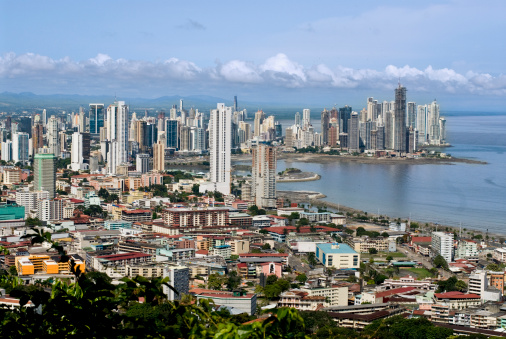Panama Foundation IRA Tax Review
The Panama Foundation has been approved as the “owner” of a U.S. retirement account in Panama. This means that, those who want to invest in Panama, have access to banks or brokerage services in Panama, or hold their retirement account n the most advanced asset protection and estate planning tool available, may now move their IRA to a Panama Foundation.
This article is a review of the U.S. and Panama tax laws as applicable to holding an IRA in a Panama Foundation. I’ve included cites for those who want to delve in to the U.S. tax code or the ERISA statutes.
I begin by noting that the U.S. code sections that allow you to move your U.S. retirement account in to a domestic or foreign LLC are the same ones used to support the Panama Foundation. The Foundation is conveyed in to a disregarded entity for U.S. tax purposes, just like an LLC, but retains its estate planning and asset protection components in Panama.
The Panama Foundation IRA structure we have created is designed around the U.S. domestic business trust IRA and the offshore IRA LLC. In a business trust, the IRA makes an investment in to the trust by acquiring the “beneficial interest” of the trust. Often the IRA will purchase 100% of the “beneficial interests” of the trust, much like it will acquire 100% of the “membership interest” of a limited liability company or shares of a corporation. Essentially, the term “beneficial interest” is the title for “equity interests” in the business trust.
Using IRC § 4975 (e)(2)(G) and ERISA Reg 2510.3-101(b)(1), we have applied these rules to the Panama Foundation, which is a hybrid trust and corporate entity. In the case of the Panama Foundation, the IRA account is the trustor or settler of the Foundation (i.e., the party who transferred assets to the Foundation) and the beneficiary (the party that holds the beneficial interest of the Panama Foundation). Therefore, the IRA account is both the trustor/settlor and the only beneficiary of the Panama Foundation.
Limitations!
In a traditional asset protection structure, we don’t usually recommend the Founder be the same “person” as the beneficiary. In the case of a Panama Foundation IRA, this is required to maintain the tax preferred status of the retirement account under U.S. law.
Also, the Panama Foundation IRA we have created may not act as both the owner of your retirement account and as an asset protection trust for your after tax (non – IRA) money. You may not mix after tax cash with your retirement savings.
U.S. Tax Classification of a Panama Foundation IRA
When you take your retirement account offshore, the objective is to (legally) eliminate all Federal and States filing obligations. To accomplish this, the Panama Foundation IRA must have only one member/founder and be considered a disregarded entity for U.S. tax purposes. This is quite different than a typical trust used for estate planning purposes or a Panama Foundation used for asset protection.
Specifically, a typical U.S. trust is governed under Subchapter J of the U.S. tax code § 641. The Panama Foundation’s tax status is determined under the “check-the-box” Treasury Regulations.
Under Treasury Reg. 301.7701-4(b), a foreign entity is treated as a business entity and classified for under Treasury Reg. 301.7701-2. Under this section, a business entity with two or more members is classified as either a corporation or a partnership. A corporation is then defined to mean a business entity organized under a state or international statute which refers to the entity as “incorporated” or as a “corporation.” For example, a Panama corporation is by default a foreign corporation, and not a partnership or trust, because it is “incorporated” under the relevant Panama code sections. Likewise, any entity ending in Inc., A.G., Corp., Ltd., or a similar designation is assured to be a corporation for U.S. tax purposes.
Now that your Panama Foundation is classified as a disregarded entity, because it has only one owner of the beneficial interests and/or submitted the form to be classified as a disregarded entity, it will not have to file federal or state income tax returns.
State tax: For example, every corporation doing business in California is subject to the minimum franchise tax of $800. The same goes for any LLC formed in California. But other entities, such as trusts formed outside of the State, are not required to pay this tax. For more information, see the California Revenue and Taxation code and related regulations (§ 23038 and CA Admin Code Title 18 § 23038(a), (b)-1 and (b)-2. As to the disregarded entity status in California, see Rev and Tax Code § 17942(a) and (b).
Plan Asset Rule
Once your retirement account has been moved to a Panama Foundation, and you are the manager of that Foundation, you’ll be required to follow the various Plan Assest Rules as defined in the ERISA Regulations at 2510.3-101(a)(2). As the plan manager, you become a fiduciary of the IRA and must always act in the best interest of the account and the Panama Foundation IRA.
As a fiduciary, you are prohibited from borrowing from the plan, using the funds for your personal benefit, making certain prohibited investments, and engaging in any transaction at less than fair market value. Basically, you are to manage the Panama Foundation for the benefit of the retirement account as a professional investment advisor would. You should act as if the funds belong to someone other than you… which, in fact, they do… cash belongs to the IRA.
I would like to point out here that these rules apply to Panama Foundations and LLCs that hold a U.S. retirement account. They are not applicable to a Panama Foundation used to protect after tax money (personal savings).
For more information on your rights and responsibilities, as well as a discussion of what you may and may not invest in, please see my Self Directed IRA page (top right of the menu).
Documents of the Panama Foundation
Where a typical Panama Foundation consists of a Foundation Charter and a Letter of Wishes, a Panama Foundation IRA is built upon a similar Charter and an Operating Agreement. The Charter sets forth the purpose of the Foundation in general terms and the Operating Agreement (which is a private document not filed with the government) describes the IRA structure in detail.
The Foundation Charter is public record and filed in Panama. The Operating Agreement is essentially a contract between you and the U.S. custodian detailing each party’s rights and obligations with regards to the IRA Foundation. Collectively, these are referred to as the Foundation documents.
The Foundation documents work together to set forth the purpose of the Foundation, which is to make appropriate investments and manage the IRA funds it controls. As such, these documents give the manager (you) the authority to open bank and brokerage accounts, purchase property, and spend money to improve or add to that property.
It is the Foundation Charter that gives the Founder the ability to enter in to the Operating Agreement with the retirement account administrator. Then it is these documents together that allow you, the beneficial owner of the retirement account, to be appointed as the manager.
As the manager of the Panama Foundation IRA, you have the right to make investment decisions, as well as any changes to the Foundation Charter and Operating Agreement. As such, you are taking the right and responsibility to make decisions away from the U.S. administrator.
The administrator agrees to transfer this authority to you, and you agree to indemnify him from any actions you take as the manager of the Panama Foundation. In other words, the Operating Agreements says you must follow all applicable rules (such as the plan asset rule), and can make any permitted investment you like. If you lose money, or break a rule and the IRA is penalized by the IRS, that’s on you… the administrator has no liability. His job is to 1) invest the IRA in to the Panama Foundation and 2) file annual forms with the IRS. For this, he will charge a few hundred dollars a year. He doesn’t get to charge a fee or make a commission on any of your investments and has no liability if you make a bad deal.
As such, you will be the only signatory on the bank accounts. The U.S. administrator will have no right to force the assets of the Panama Foundation be returned to the United States. If you come under attack (litigation), then you decide how to handle those offshore accounts.
Finally, you are not required to seek the administrator’s permission for any investment. You have total control over the check book of the Panama Foundation… and that’s how the administrator wants it.
Active Business in a Panama Foundation IRA
The Panama Foundation, as defined in Law No 25, Private Interest Foundations, issued on June 25, 1995, may not operate an active business. So, while it is legal for a U.S. IRA to operate a business, it is not possible to do so if you move the retirement account in to a Panama Foundation.
However, I don’t see this as much of a drawback… an offshore IRA should not be operating a business anyway. Any business owned and operated by a retirement account will generate Unrelated Business Income in the United States, which will be taxed at 35%. That’s right, active business income earned in a retirement account is taxable.
To eliminate this tax, an offshore IRA structure may form a UBIT blocker corporation to hold the business. Then, the corporation passes interest and dividends up to the Foundation/IRA. This converts the UBI in to traditional investment income and avoids the UBIT.
For more information on UBIT and blocker structures, please see my various posts on this topic. Suffice it to say, any active business owned by the Panama Foundation IRA should be in a Panama corporation.
I hope you have found this review of the Panama Foundation IRA structure helpful. For more information, please call us or send an email to info@permieroffshore.com. We will be happy to work with you and answer any questions you may have.
Note that we are the creators of the Panama Foundation IRA structure. As such, we are uniquely qualified to help you move your retirement account to Panama.










